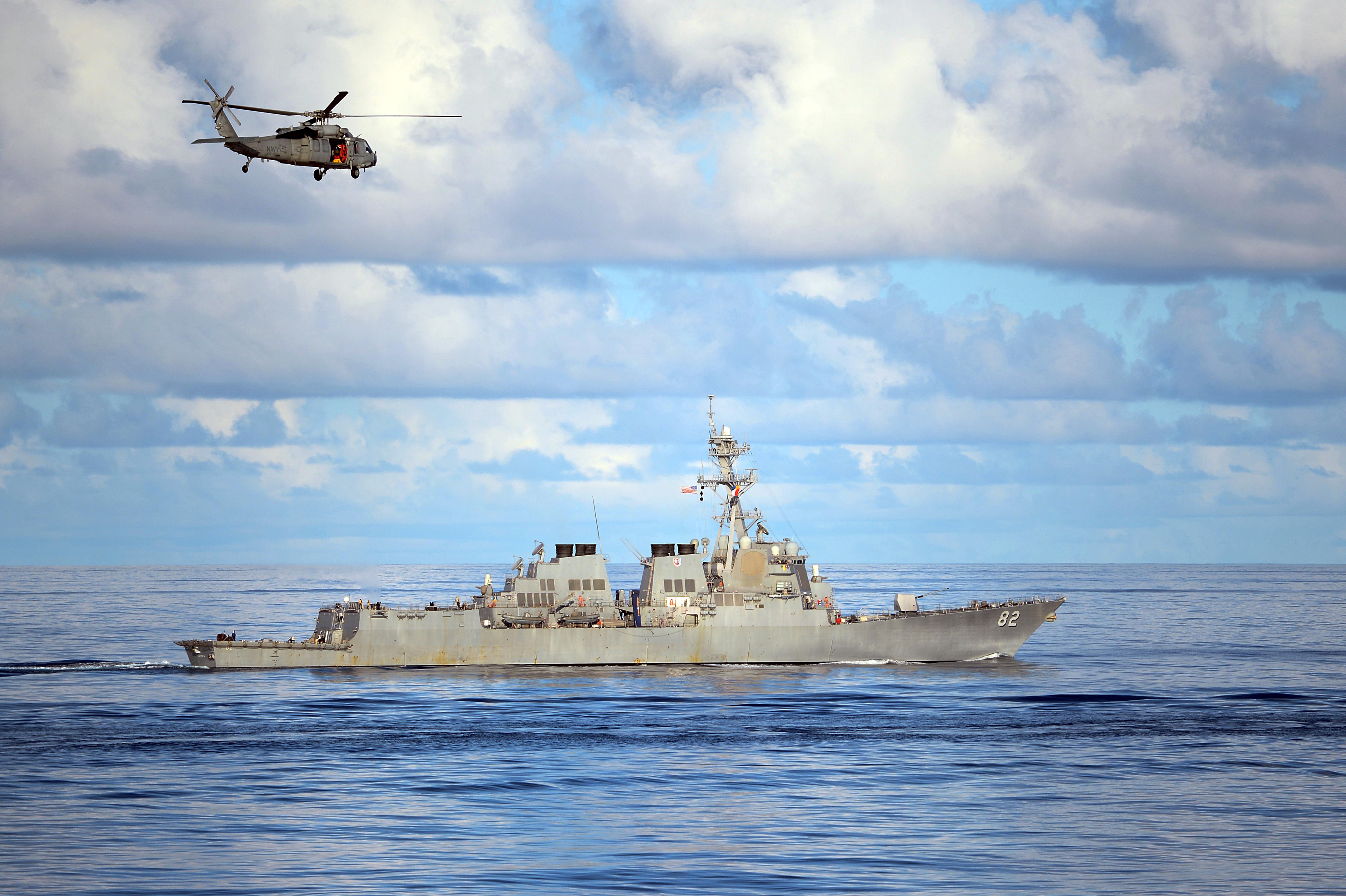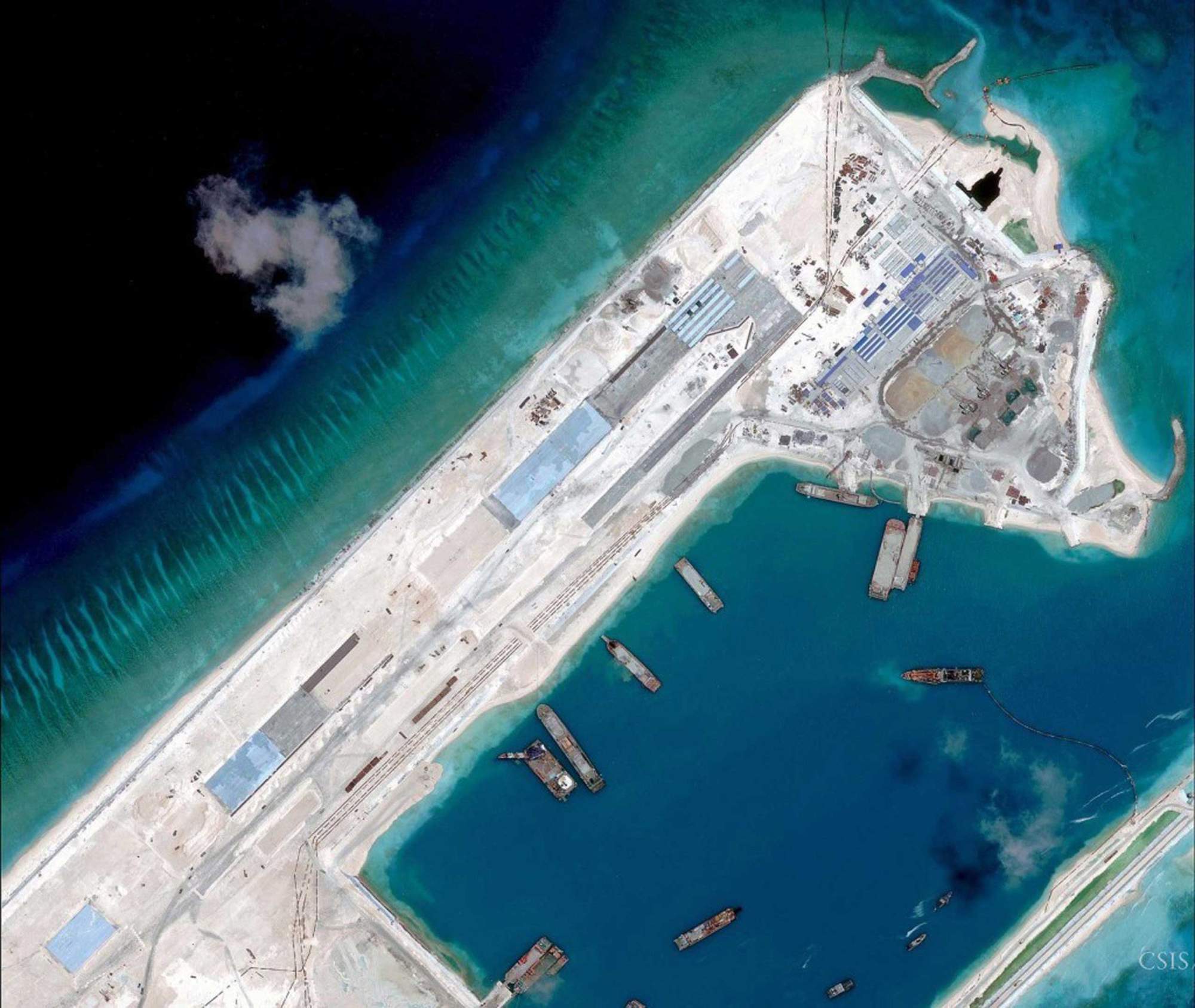
After months of deliberation, the U.S. has sent a guided missile destroyer within 12 nautical miles of a Chinese artificial island in the South China Sea in a move that practically rejects Chinese claims to the reclaimed reefs and has inflamed Beijing.
Late Monday USS Lassen (DDG-82) came within 12 nautical miles of Subi Reef — off the western coast of the Philippines — on which the Chinese have built a weather monitoring station and other facilities, said the Chinese Foreign Ministry via a report in The Associated Press.
The Pentagon spokesman would not confirm the account to USNI News but said in a late Monday statement, “the United States is conducting routine operations in the South China Sea in accordance with international law. U.S. forces operate in the Asia-Pacific region on a daily basis, including in the South China Sea.”
For its part the Chinese Foreign Ministry has said the move by the U.S. was provocative and threatened a commensurate response to the mission.
“China will resolutely respond to any country’s deliberate provocations,” the Ministry said in a statement.
“The actions of the U.S. warship have threatened China’s sovereignty and security interests, jeopardized the safety of personnel and facilities on the reefs, and damaged regional peace and stability.”
While China has confirmed Lassen came within 12 nautical miles— the distance of a country’s internationally recognized maritime boundary — and was contacted via radio it’s unclear what the ship did while in proximity to the island.
There is a stipulation in international maritime law known as “innocent passage” in which a warship can transit within a country’s 12 nautical mile boundary legally but it must do so expeditiously and without conducting any military actions such as transmitting propaganda or radiating targeting radars.
An innocent passage around the features could be interpreted as an implied recognition of Chinese sovereignty of the artificial islands — of which the U.S. does not recognize.
However, given the reaction from the Chinese Foreign Ministry, the likelihood Lassen’s passage conformed to the “innocent passage” rules are low.
The move drew praise from Rep. Randy Forbes (R-Va.) chairman of the House Armed Services subcommittee on seapower and projection forces.
“The passage of U.S. vessels within 12 nautical miles of China’s man-made features in the South China Sea is a necessary and overdue response to China’s destabilizing behavior in the region,” read a statement provided to USNI News. “International law is clear that China has no legitimate claim to sovereignty over these waters, and it is high time that this administration reaffirmed America’s enduring commitment to freedom of navigation and the maintenance of peace and stability in the Asia-Pacific region.”
While Chinese installations to support their extensive claims in the South China Sea are not new — for example Beijing has had small buildings installed on poles in the middle of the South China Sea for years — the pace and scale of which China has rushed to build the installations are unprecedented.

Since the last freedom of navigation mission the U.S. conducted within 12 nautical miles of Chinese claims in 2013, the Chinese have reclaimed hundreds of acres on bases in the Spratlys and the Paracels including constructing a 10,000 foot runway on Fiery Cross Reef that puts the Philippines, Vietnam and Malaysia within strike fighter range of the airfield.
China has repeatedly denied the installations are or will be militarized but U.S. officials have said that could easily change.
“If you look at all of these facilities — and you could imagine a network of missiles sites, runways for their fifth generation fighters and surveillance sites and all that — it creates a mechanism in which China would have de facto control over the South China Sea in any scenario short of war,” U.S. Pacific Command commander Adm. Harry Harris said before the Senate Armed Services Committee (SASC) last month.
While Lassen’s mission is the first freedom of navigation mission around the artificial features in several years, it is unlikely to be the last.
“This is something that will be a regular occurrence, not a one-off event,” a U.S. defense official told Reuters.
“It’s not something that’s unique to China.”





